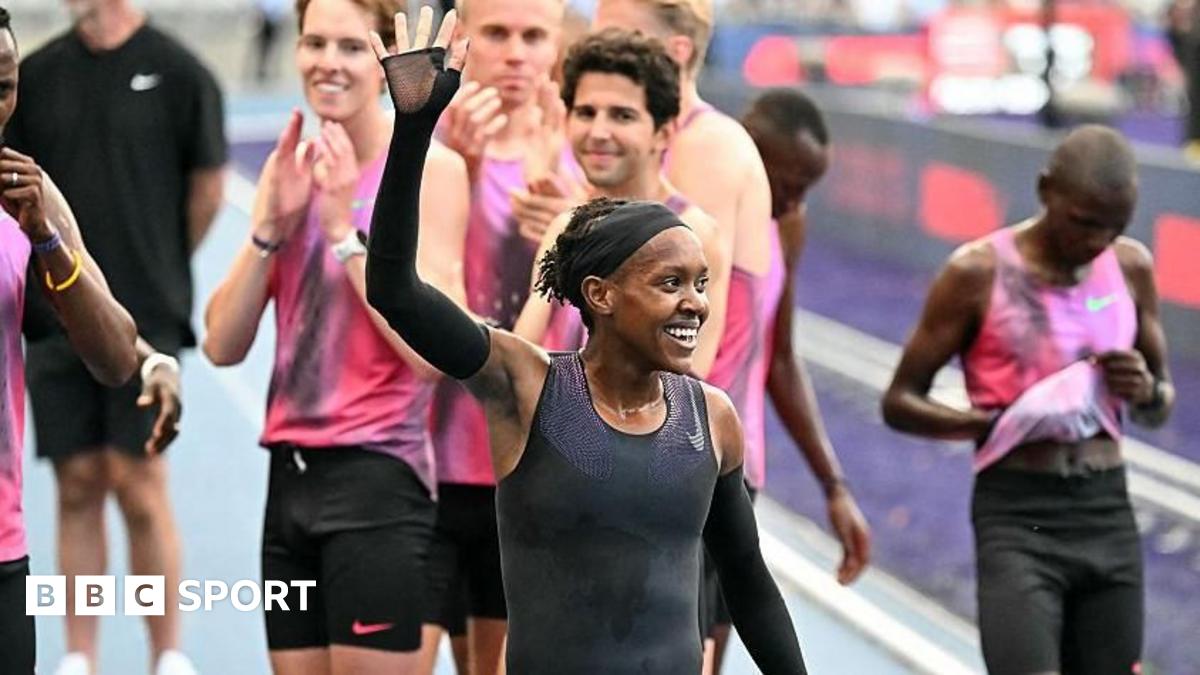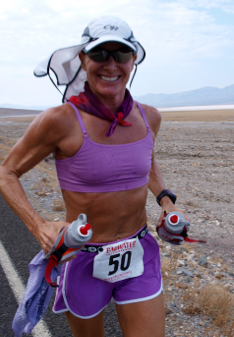How to Use Bike Training to Dramatically Improve Your Running Performance
Did you know that 70% of elite runners incorporate cycling into their training regimens?
While it might seem counterintuitive to pedal your way to faster running times, the cross-training benefits of biking are backed by science and embraced by coaches worldwide.
For runners looking to boost performance while reducing injury risk, cycling offers the perfect complementary activity.
Whether you're recovering from a running injury, building endurance without impact stress, or simply seeking variety in your training routine, strategically adding bike workouts can transform your running experience.
Benefits of Biking for Runners
Biking offers runners substantial cardiovascular improvements similar to running, helping build stamina and endurance. As a low-impact activity, cycling reduces stress on joints while maintaining fitness making it ideal during injury recovery periods.
Cyclists develop different muscle groups than runners, particularly quadriceps, glutes, and core muscles.
This complementary strength
helps correct imbalances common in runners. Hill climbs are especially effective for building power that transfers to running performance.
By substituting some running sessions with cycling, athletes can maintain conditioning while reducing the risk of overuse injuries associated with high-mileage training.
Additionally, mixing in bike workouts provides mental freshness, helping prevent the psychological fatigue that comes with monotonous training routines.
Selecting the Right Bike
Types of Bikes
Road bikes offer lightweight frames and efficient design for speed on pavement perfect for structured training sessions. Hybrid bikes provide versatility across different surfaces and greater comfort, making them suitable for beginners.
Stationary bikes allow for weather-independent training and precise interval workouts.
Bike Fit and Setup
Proper bike fit is essential for cross-training success.
The right frame size, saddle height, handlebar reach, and pedal alignment prevent discomfort during rides.
Correct positioning reduces the risk of knee pain and back issues that could affect your running. Most bike shops offer fitting services to help runners find their optimal position for cross-training efficiency.
Creating a Balanced Training Plan
Mix of Running and Biking
Most runners benefit from adding 2-3 bike sessions weekly while
maintaining their key running workouts.
Beginners might start with two cycling workouts, while advanced runners can incorporate up to three sessions depending on their weekly mileage and recovery needs.
Modifying Volume and Intensity
Adjust your bike workouts based on current running goals. During peak running seasons, keep cycling sessions shorter and less intense. When recovering from injury or in off-season, increase bike training to maintain fitness without impact stress.
Match the intensity of bike workouts to what you'd normally do running use easy rides for recovery days and more challenging sessions for interval work.
Strategic Scheduling
Place longer bike sessions on cross-training days, typically 24-48 hours from hard running workouts.
Light cycling (20-45 minute recovery spins) works well after long runs to stimulate blood flow and clear metabolic waste without adding stress to joints. Save your legs for quality running by scheduling intense bike sessions away from important run workouts.
Integrating Biking Workouts Effectively
Sample Bike Workouts
Endurance rides lasting 60-120 minutes at moderate effort build your cardiovascular base without running impact. Hill repeats strengthen legs and improve power, transferring directly to running uphill.
Interval sessions consisting of 1-3 minute high-intensity efforts followed by equal recovery periods develop speed and
VO2 max. Recovery spins of 20-45 minutes at easy effort promote blood flow after hard runs.
Active Recovery
Light cycling accelerates recovery by increasing circulation without loading joints.
A gentle 30-minute spin the day after a long run or race helps reduce
muscle soreness (doms) and speeds healing. The non-impact nature of cycling allows you to maintain movement while giving running-specific muscles a break.
During Injury or High-Mileage Periods
When nursing an injury or managing high running volume, substitute missed runs with comparable bike workouts. Focus on non-impact tempo rides to maintain fitness when running isn't possible.
Many professional runners maintain their conditioning during
injury recovery through structured cycling sessions that mirror their running training patterns.
Techniques and Training Tips
Transitioning Safely
Moving between running and biking requires proper adaptation. Start each session with a thorough warm-up to prepare muscles for the specific activity.
When switching from primarily running to adding bike sessions, begin with shorter rides to allow your body to adjust to the new movement patterns.
Monitoring Intensity
Track your effort during bike workouts using heart rate monitors to ensure training in the right zones.
For those without monitors, use perceived exertion scales (rating effort from 1-10) to gauge intensity. Advanced cyclists might use power meters for precise measurement of output during indoor or outdoor sessions.
Warm-Up & Cool-Down
Begin every bike workout with 10-15 minutes of easy pedaling to increase blood flow to working muscles.
After the main session, cool down with 10 minutes of light spinning to help clear lactic acid and promote recovery.
This practice reduces muscle stiffness that might affect your next running session.
Addressing Common Challenges
Maintaining Running-Specific Fitness
Even when increasing bike training, keep at least one or two quality running sessions weekly. These maintain your running economy and muscle activation patterns that cycling can't replicate.
Schedule a weekly long run and one speed workout to preserve running-specific adaptations while enjoying cycling's benefits.
Avoiding Muscular Imbalances
Cycling typically strengthens quadriceps more than hamstrings, potentially creating imbalances. Incorporate
strength exercises targeting hamstrings, hip flexors, and core muscles twice weekly.
Lunges, deadlifts, and bridges help counteract cycling's quad-dominant nature and support proper running mechanics.
Managing Fatigue
Watch for signs of cumulative tiredness like persistent soreness, declining performance, or mood changes.
Track both running and cycling workouts to identify patterns of overtraining. If fatigue increases, reduce cycling intensity before cutting running volume.
Rest days remain essential sometimes the best cross-training is no training at all.
Progress Tracking and Adjustments
Evaluating Impact
Track running metrics such as pace, race results, and perceived effort to assess how cycling influences your performance. Note recovery times between hard workouts and your ability to maintain running form during longer distances.
Keep a simple log comparing weeks with more cycling to those with less, recording how your legs feel during key running sessions.
Adjusting Your Cross-Training Mix
Review your combined running and cycling schedule every 2-4 weeks. If running performance improves with current cycling volume, maintain the balance.
When noticing faster recovery or reduced injury pain, you might increase cycling frequency.
Conversely, if running economy suffers or specific running workouts feel harder, reduce bike sessions temporarily.
During racing seasons, gradually decrease cycling and increase running-specific training about 6-8 weeks before important events.
Additional Considerations
Essential Gear and Safety Tips
Always wear a helmet when cycling, regardless of experience level. High-visibility clothing and lights are necessary for outdoor rides, especially during dawn, dusk, or night hours.
Padded shorts reduce discomfort during longer rides, while cycling gloves protect hands in case of falls.
Proper cycling shoes improve power transfer and efficiency during pedaling.
Indoor vs. Outdoor Cycling
Indoor cycling provides controlled conditions, making it ideal for structured workouts regardless of weather. Sessions can be precisely measured and replicated, with no traffic concerns.
Outdoor cycling offers mental refreshment and technical skill development but comes with weather variables and safety considerations. Many runners use a mix of both depending on training goals and seasons.
Sample Weekly Schedules
Beginners can start with two runs and two bike sessions weekly one recovery ride and one endurance ride. Intermediate runners might follow three runs (including one interval session) plus two to three bike workouts combining cross-training and recovery.
Advanced runners typically maintain four or more quality runs while fitting in two targeted cycling sessions, reducing intensity during peak running weeks.
Adjust the balance based on your running goals, recovery needs, and injury history.
Conclusion
Integrating cycling into your running routine isn't just about injury prevention it's about becoming a more complete athlete.
The complementary nature of biking addresses the physical and mental challenges runners face, from muscular imbalances to training monotony, while maintaining cardiovascular fitness during periods when running mileage must be reduced.
Remember that consistency remains key in both disciplines. Start with modest cycling additions to your training plan, monitor how your body responds, and adjust accordingly.
With patience and proper implementation, you'll likely discover that time in the saddle translates to stronger, more sustainable performances on foot.
Discover how to use bike training to improve your running performance, reduce injury risk, and maintain fitness. Learn effective cross-training strategies for runners of all levels.

www.therunningweek.com


.jpg)












.webp)
.webp)


